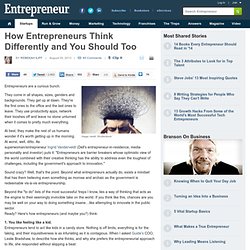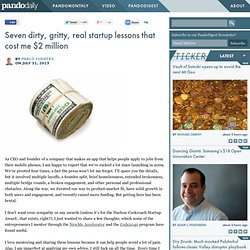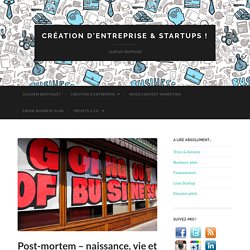

(10) Which company has the best Our Team page. Startup Killer: the Cost of Customer Acquisition. 70% of Time Could Be Used Better - How the Best CEOs Get the Most Out of Every Day. The average tech CEO works about 300 days a year, 14 hours a day.

That’s 4,200 hours a year. The stats for most other tech leaders and startup employees aren’t too far off. It sounds like a lot of time, but for most, it’s not enough. Nearly 30% of that time gets sunk into email. Another third gets spent in meetings — and studies show that half of those hours are completely wasted. Looking at the schedule of a typical CEO, a full 70% of that time is sub-optimal, and I’ll back that up with my own experience. This year, I spent several weeks leading up to our annual CEO Summit catching up with people I know who do a superhuman job at managing their time. As your company becomes more prominent, you’re only going to get more of everything.
Saying no is so hard. Try “No” templates — canned responses for all the common situations where you find yourself saying no. Hi Bill, Great to hear from you. Best,Josh This lets you put the time and attention you want into crafting a response. Startupbackpack. Funders and Founders - Visual Startup Blog. Fundraising vs. boostraping. What to look for when hiring. Comment évaluer votre idée commerciale. How to get your first 10 customers. Preface: the assumption for this essay is that you’re building a B2B app, and you have something built but you’re having trouble getting people to pay for it There are three problems with getting your first few customers:

There’s a .00006% Chance of Building a Billion Dollar Company: How This Man Did It. How Entrepreneurs Think Differently and You Should Too. Image credit: Shutterstock Entrepreneurs are a curious bunch.

They come in all shapes, sizes, genders and backgrounds. They get up at dawn. They're the first ones to the office and the last ones to leave. They use productivity apps, network their tooshes off and leave no stone unturned when it comes to pretty much everything. At best, they make the rest of us humans wonder if it's worth getting up in the morning. Sound crazy? Beyond the "to do" lists of the most successful ‘treps I know, lies a way of thinking that acts as the engine to their seemingly invincible take on the world. 1. "I keep my childlike wonderment alive. Related: Inside Nerdist's Media Empire for the Internet Age.
Le livre le plus lu par les entrepreneurs Internet. August 19, 2013 – The Ultimate Cheat Sheet For Starting And Running A Business. The Ultimate Cheat Sheet For Starting And Running A Business No joke.

This is going be a bullet FAQ on starting a business. If you're a lawyer, feel free to disagree with me so you can charge someone your BS fees to give the same advice. If you can think of anything to add, please do so. I might be missing things. There are many types of business. The rules are: I'm going to give no explanations. 1) C Corp or S Corp or LLC? 2) What state should you incorporate in? Seven dirty, gritty, real startup lessons that cost me $2 million. By Pablo Fuentes On July 31, 2013 As CEO and founder of a company that makes an app that helps people apply to jobs from their mobile phones, I am happy to report that we’ve sucked a lot since launching in 2009.

We’ve pivoted four times, a fact the press won’t let me forget. I’ll spare you the details, but it involved multiple layoffs, a founder split, brief homelessness, extended brokenness, multiple bridge rounds, a broken engagement, and other personal and professional obstacles. Along the way, we iterated our way to product-market fit, have solid growth in both users and engagement, and recently raised more funding. But getting here has been brutal. Post-mortem – naissance, vie et mort de ma startup — #fail. [Attention, long article, donc long temps de lecture à prévoir – mettez-vous dans de bonnes conditions pour l’apprécier ou prévoyez une lecture ultérieure !]

TL;DR En partant il y a presque 2 ans de l’incubateur HEC pour lancer une startup (sans encore en avoir l’idée fondatrice), je ne m’imaginais évidemment pas, 18 mois plus tard, m’être planté de manière aussi belle et « classique », perdant au passage un ami, de l’argent, la confiance de certains dans mon réseau, et quelques petits bouts d’égo. Cet article revient en détails sur le déroulé du projet, partage certains documents internes qui montrent les évolutions et pivots ainsi que quelques-unes de nos façons de travailler (et documente ainsi le démarrage, la vie et la mort d’une startup de manière assez transparente, ce qui me semble assez rare), et tente ensuite de mettre des mots — de mon point de vue personnel donc très subjectif — sur les leçons que j’en retire. Sur le papier, tout va alors bien.
Calendrier des “faits” Année 2011. Conseils Entrepreneuriat. Comment ruiner son business en 4 leçons. Rédacteur Web | Dynamique Entrepreneuriale Si l’image de l’entrepreneur est souvent associée aux grandes réussites, avec les Marc Simoncini, Xavier Niel… on parle moins de tous ceux qui ont échoué (parfois lamentablement) dans cette aventure.

Pourquoi ont-ils échoué ? Plusieurs causes reviennent souvent et si vous-même voyez votre business péricliter il y a fort à parier que ce sera pour une des raisons qui vont suivre… On pointe souvent du doigt l’Etat, les banques, ou les partenaires…en réalité les échecs viennent souvent d’erreurs commises par les entrepreneurs eux-mêmes. Eloignement de la réalité du terrain C’est une erreur classique mais qui ne pardonne pas : l’éloignement de la réalité du terrain. C’est pour cette raison qu’il ne faut pas hésiter à sortir son produit tôt pour pouvoir bénéficier des retours des premiers consommateurs. Même une fois que votre produit est lancé, il est indispensable d’aller au contact de ses clients potentiels et partenaires. Croissance non maîtrisée.